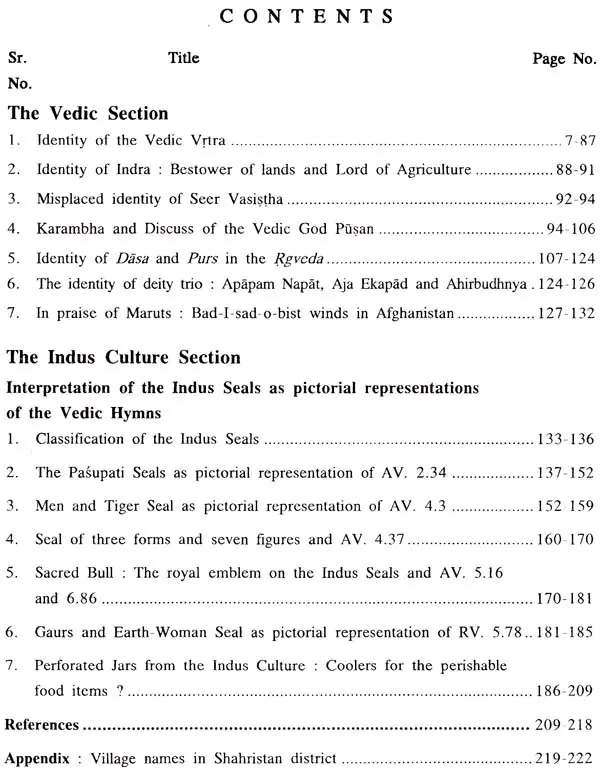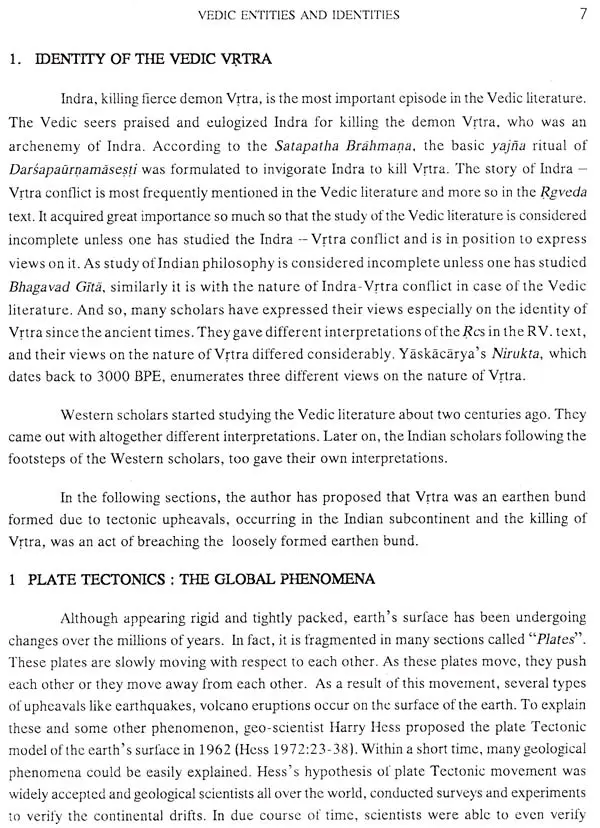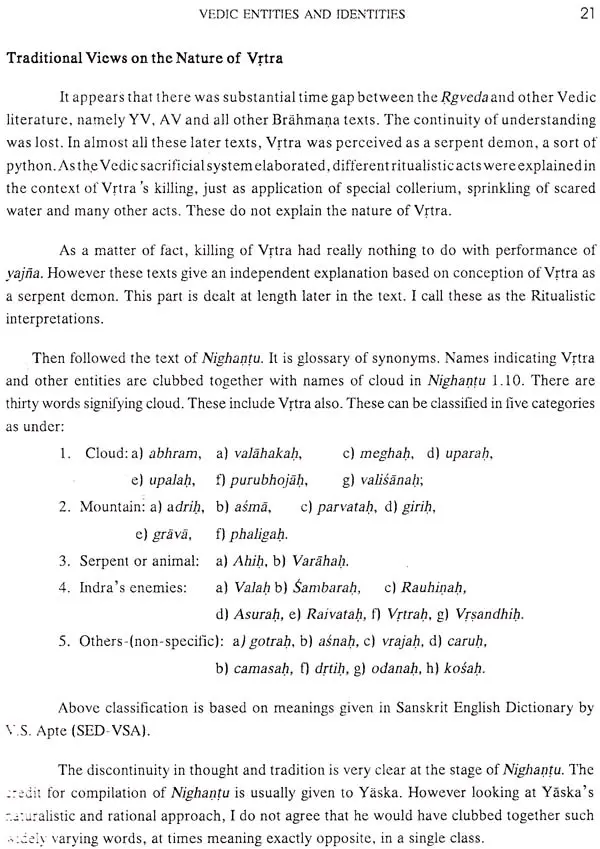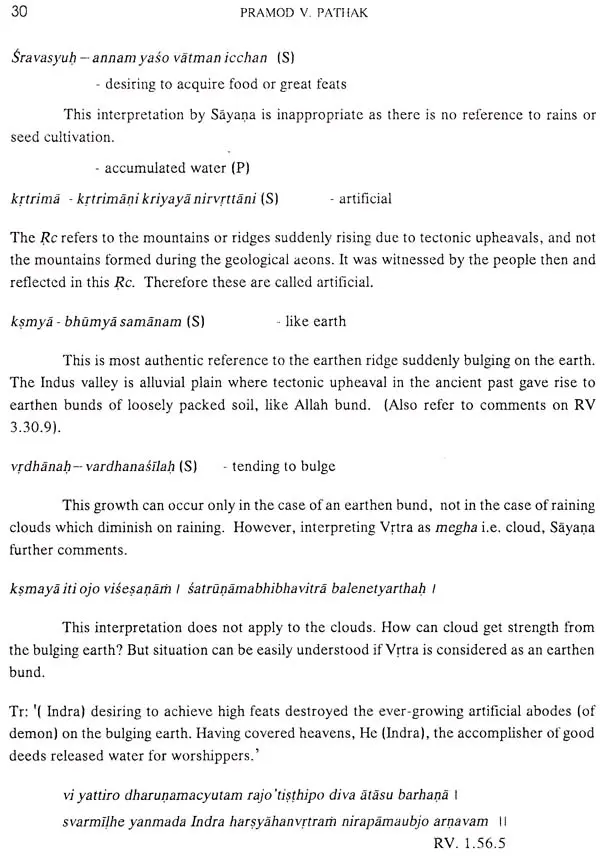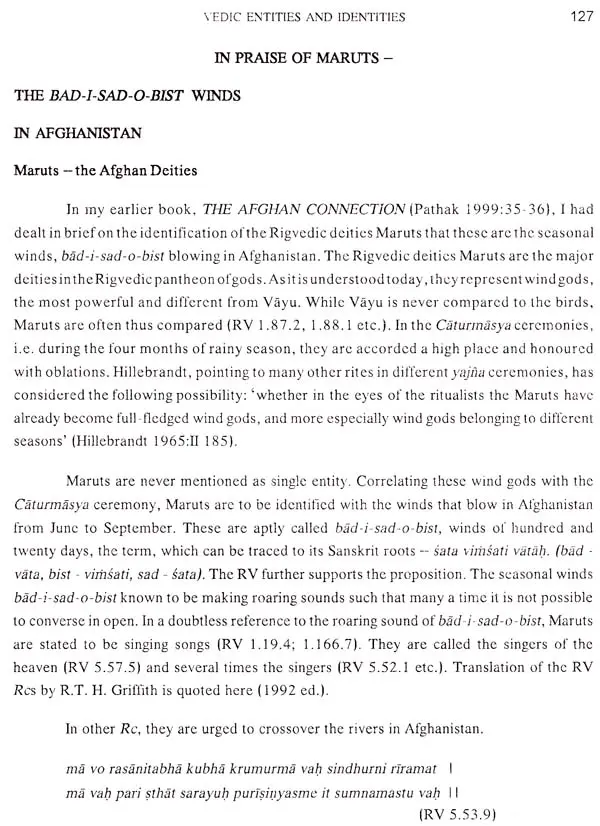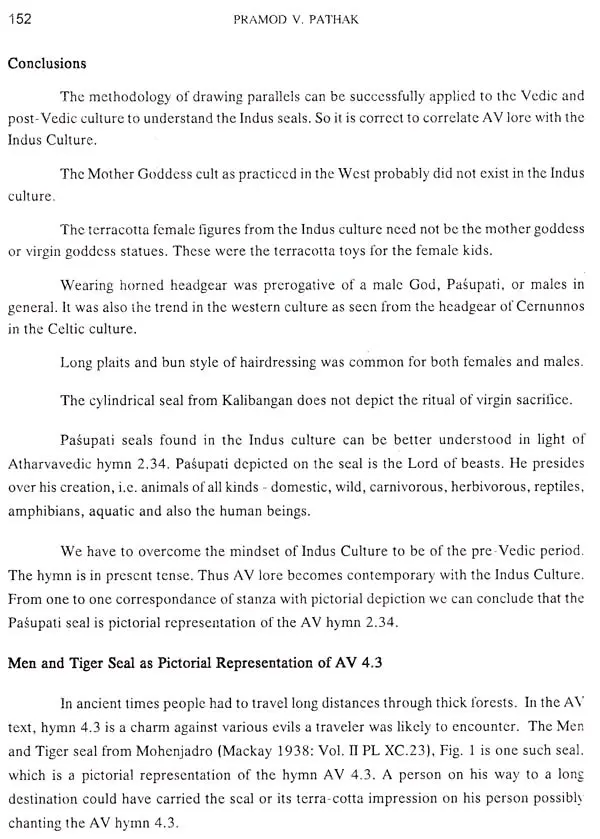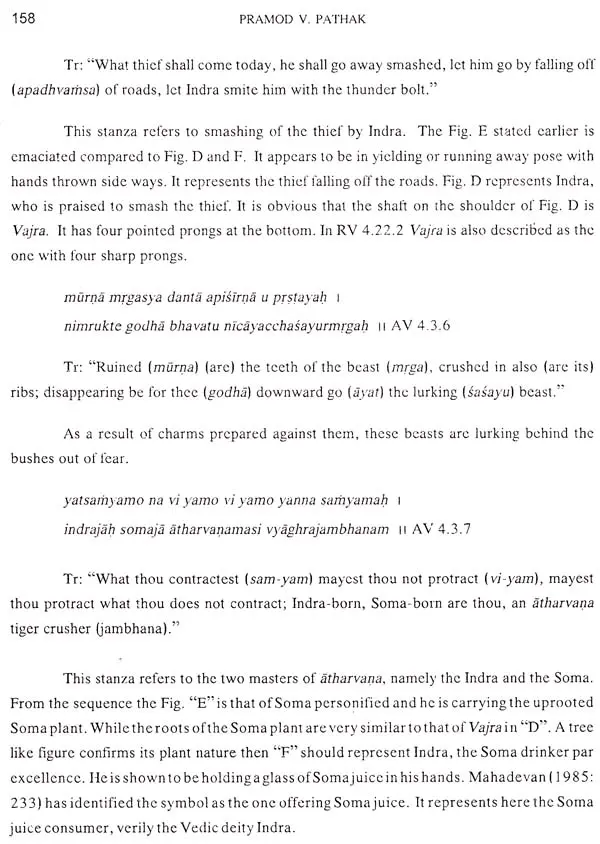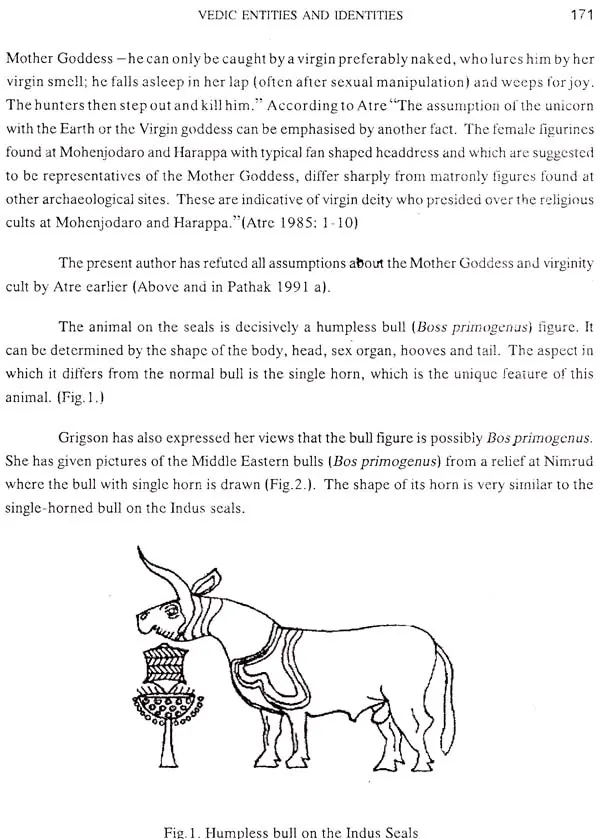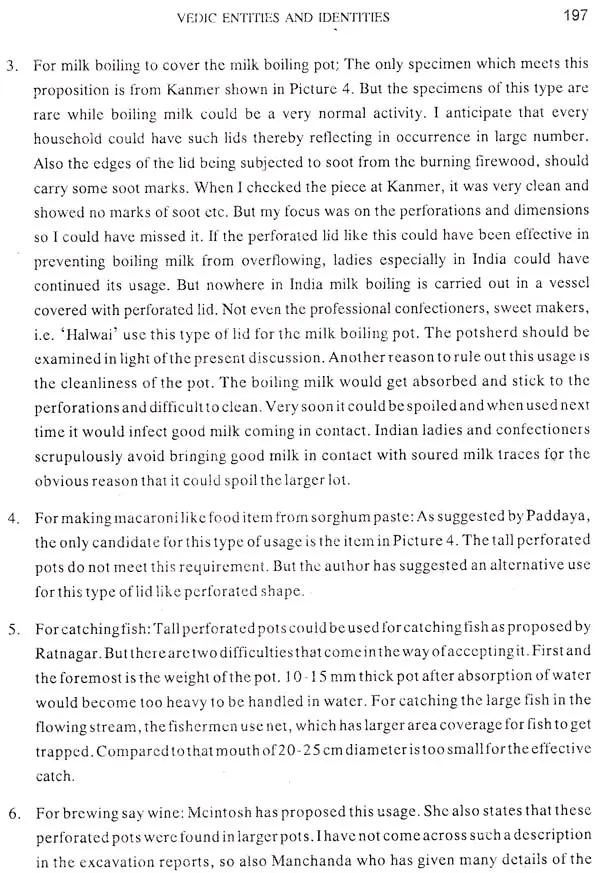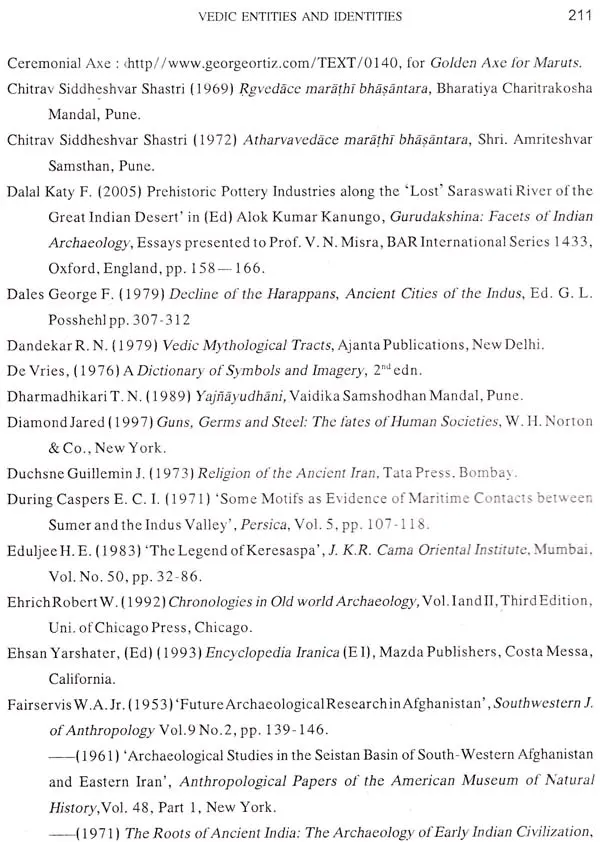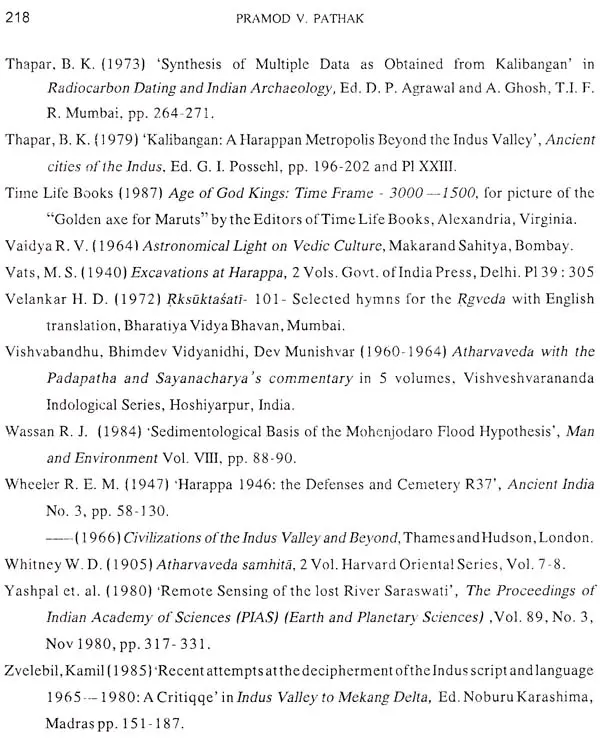
Vedic Entities and Identities (Ethno-Archaeology of The Vedic Period)
Book Specification
| Item Code: | UAQ436 |
| Author: | Pramod V.Pathak |
| Publisher: | Oriental Institute, Vadodara |
| Language: | English |
| Edition: | 2012 |
| Pages: | 222 |
| Cover: | PAPERBACK |
| Other Details | 9.50 X 7.50 inch |
| Weight | 320 gm |
Book Description
Since my childhood, I developed liking for the historical and ancient text reading. Series of articles by Adv. P.R. Deshmukh on the Indus Culture and the Rgveda and a series of lectures by Iravatham Mahadevan during college days gave me an idea that Indus seals posed a great problem for scholars all over the world. After marriage, my wife Usha joined M.A. Sanskrit course. We both studied a few hymns of the RV as a part of her studies. Next I got golden opportunity to study the Nasadiya Sukta at the feet of great savant and scholar Tarkasurya Sitaramshastri Kurundkar. He opened the way for me to study the Vedic texts with Sayaṇas commentary. It was my formal introduction to the Vedic literature. While studying the Visvamitra-Nadi hymn, I hit upon the idea that the demon Vṛtra could be an earthen bund formed due to tectonic upheavals. I studied the RV text thoroughly and found that it was the way the Vṛtra identity could be established. Series of my papers in Annals of Bandarkar Oriental Research Institute further encouraged me to study the Indra-Vṛtra conflict in depth. As somebody suggested me to register for Ph.D. on the topic, I was fortunate enough that Prof. S. A. Upadhyay, Director of Bharatiya Vidya Bhavans Indological Research Institute accepted me as his Ph.D. student. I had to study the Vedic literature in depth. By the time I finished my Ph.D., I had few problems to be further investigated. I found Pasupati seal from the Indus Culture to be pictorial representation of hymn AV 2.34. Then started a new quest in the field of Indus Culture. I started visiting Deccan College, visited a few Indus Culture sites and interacted with many archaeologists. They encouraged me a lot. Over the decades, it has been a multidisciplinary quest. As a Chemical engineer by profession, I developed different view to look at these things. The last thing I did was to actually fabricate a porous pot, similar to the pots from the Indus Culture and conduct experiments. At the Oriental Institute, M.S. University, I got this opportunity to present many of my findings before the enlightened audience at Vadodara. The credit goes to Dr. D. V. alias Dadumia Nene and Prof. Mukund Wadekar who have organized it. Thanks are also due to colleagues of Prof. Wadekar at the Oriental Institute, who critically corrected the proofs. I wish to thank the various publications of books and journals and private individuals whose works I have quoted. Should there be any omissions, I apologize on behalf of publishers and myself and we will be pleased to make appropriate acknowledgements in future.
**Contents and Sample Pages**

